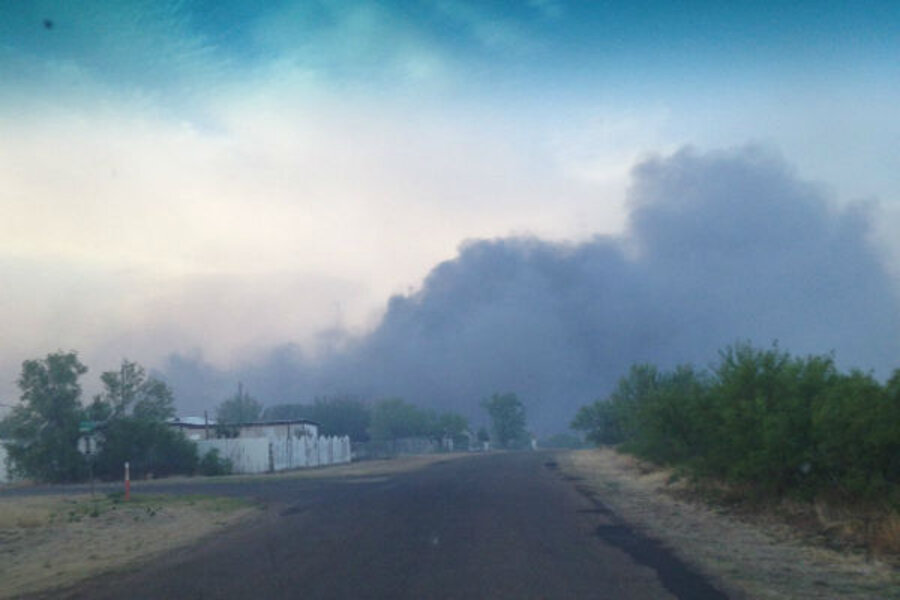Texas Panhandle wildfire torches 75 homes, as drought conditions persist
A devastating wildfire in a small Texas Panhandle community has consumed at least 75 homes and displaced 700 people.
The blaze, which began about 4 p.m. local time Sunday afternoon, continues to threaten 1,000 homes.
Officials have yet to determine the cause of the blaze, which has swept across1,500 acres and drawn firefighters from 26 counties as far as 165 miles away. The Texas A&M Forest Service has employed a spotter plane and air tankers to douse the blaze from the air.
Seventy-five percent of the fire was contained as of Monday morning, Fritch Police Chief Monte Leggett told the Associated Press.
“With the wind blowing the way it is, and the hot spots, the wind keeps switching from one direction to another so it's almost impossible [to fight],” Chief Leggett told ABC News on Sunday.
Residents of Fritch, which is 37 miles north of Amarillo, have taken shelter at the Sanford-Fritch High School and Johnson Park Youth Center in Borger, the Amarillo Globe-News reported.
Many residents do not yet know if their home is still standing.
“Everything we own is out there, but we have the good Lord on our side,” Lake Meredith Harbor resident Walt Brinson told the Globe-News. “We will come out of it all right one way or another.”
So far no injuries or deaths have been reported.
"We've just been in emergency evacuation and emergency firefighting mode," Danny Richards, emergency management coordinator for Hutchinson County, told Reuters. "The area where they were evacuated from is still burning."
Officials closed State Highway 136 between Fritch and Amarillo Sunday, but the road was reopened Monday morning.
A week ago Sunday, another wildfire near Guthrie, Okla., killed one person and temporarily displaced 1,000 others, burning 3,500 acres and destroying 30 buildings.
Much of the Southwest faces abnormally high fire potential this month because of persistent severe-to-exceptional drought conditions, according to National Interagency Fire Center predictions.
Increased frequency of wildfires could become commonplace for the region if hot and dry conditions continue to escalate as predicted by the Intergovernmental Panel on Climate Change and the National Climate Assessment.
This season is already shaping up to be one worst on record in California, the Monitor’s Gloria Goodale reported last week.
So far this year, “Cal Fire has already fought 1,244 wildfires, and that’s triple the average for that period of time,” US Secretary of the Interior Sally Jewell said at a press conference in San Diego Tuesday. “And it’s not going to get better over the course of this year.”
• Material from the Associated Press and Reuters was used in this report.






